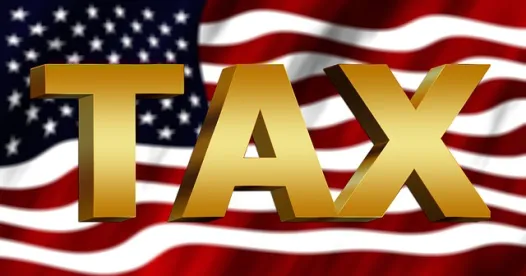On January 13, 2017, the Internal Revenue Service released Private Letter Ruling 201702009. The IRS held in this private letter ruling that the existence of unspent “available project proceeds” would not cause an issue of Build America Bonds (“BABs”) to lose their status retroactively when they are redeemed with the proceeds of tax-exempt bonds.[1] The IRS further held that the issuer of the BABs would not lose any subsidy paid to it in respect of the BABs for the period that ends on the BABs’ redemption date. This private letter ruling is most interesting for an opinion that the IRS expressly said that it was not giving but that is unavoidably implicit in the holding of the private letter ruling.
Before we get to the interesting part of PLR 201702009, let’s first describe the facts that led to the rulings expressly given by the IRS. This PLR deals with an issuer of BABs who contemplates a current refunding of the BABs. The issuer would effect this current refunding by depositing into a defeasance escrow the proceeds of tax-exempt bonds, along with proceeds of the BABs that are held in a debt service reserve fund for the BABs and the amounts, if any, held in a bona fide debt service fund for the BABs. These amounts would be released from the escrow within 90 days after the issuance date of the tax-exempt bonds to redeem the BABs. However, an unspecified portion of the “available project proceeds” of the BABs, [2] as reduced by the proceeds deposited in the debt service reserve fund, had not been spent, and the issuer anticipated that the unspent proceeds of the BABs would become transferred proceeds of the tax-exempt bonds upon the redemption of the BABs. The issuer represented that these unspent proceeds of the BABs would be spent on capital expenditures by a date certain following the redemption of the BABs.
The issuer of the BABs sought a ruling that these unspent proceeds would not cause a retroactive loss of BABs status once the BABs were redeemed. One statutory requirement, among many, that bonds must satisfy to be BABs is that 100% of the difference between the available project proceeds of the bonds and the amounts, if any, held in a reasonably required reserve for the bonds are to be used for capital expenditures. The IRS seized upon the phrase “are to be used” in the foregoing capital expenditure requirement, and the identical use of this phrase in various provisions of the Internal Revenue Code that deal with tax-advantaged bonds, to hold that the unspent proceeds of the BABs would in these circumstances not cause the BABs to lose their status as such on a retroactive basis.
The IRS reached this holding because in other instances where the phrase “are to be used” occurs with respect to the use of proceeds of tax-advantage bonds, there is a failure to satisfy the applicable use-of-proceeds requirement once the issuer reasonably determines that the remaining proceeds of the tax-advantaged bonds will not be used in accordance with the applicable use-of-proceeds requirement. In PLR 201702009, the issuer of the BABs represented that it would use the unspent proceeds of the BABs by a date certain after the redemption of the BABs to pay capital expenditures. Consequently, the IRS held that the unspent proceeds of the BABs would not adversely affect their status as such. In consequence of this holding, the IRS further held that the unspent proceeds would not cause the issuer to lose any direct payment subsidy in respect of the BABs for the period ending on the BABs’ redemption date.
The IRS based the foregoing holdings on the condition that the issuer not use the unspent proceeds of the BABs on items other than capital expenditures. The IRS stated that it expressed no opinion as to whether the BABs would retain their status as such if at any point the issuer no longer expects to use the unspent proceeds on capital expenditures. The IRS finally stated that it expressed no opinion as to whether the BABs would be reissued for federal tax purposes upon the deposit of proceeds of the tax-exempt refunding bonds into the defeasance escrow for the BABs.
This last disclaimer is the most interesting part of PLR 201702009. Unless the defeasance escrow for the BABs constitutes an economic defeasance, rather than a legal defeasance, of the BABs under Treas. Reg. § 1.1001-3(e)(5)(ii)(A), which would be unusual, implicit in the IRS’s holding that the issuer is entitled to direct payment subsidies on the BABs for the period that ends on their redemption date is the conclusion that the defeasance of the BABs does not cause them to be reissued for federal tax purposes. Treas. Reg. § 1.1001-3(e)(5)(ii)(A) provides that the legal defeasance of a debt instrument (other than a “tax-exempt bond” – more on this below) changes the nature of the debt instrument from recourse to nonrecourse, which results in a significant modification of the debt instrument and the treatment of that instrument as reissued for federal tax purposes. For this purpose, Treas. Reg. § 1.1001-3(e)(5)(ii)(A) describes a legal defeasance as a defeasance “in which the issuer is released from all liability to make payments on the [defeased] debt instrument.”[3]
The IRS has taken the position in Chief Counsel Advice Memorandum Number AM 2014-009 (the “Memo”) that the legal defeasance of direct payment subsidy obligations, such as BABs, results in the reissuance of those obligations for federal tax purposes as obligations that are no longer entitled to the direct payment subsidy. The IRS reached its conclusion in the Memo by determining that BABs are not “tax-exempt bonds” within the meaning of Treas. Reg. § 1.1001-3(f)(5)(iii), which defines a tax-exempt bond as “a state or local bond that satisfies the requirements of [Internal Revenue Code] section 103(a).” Under Treas. Reg. § 1.1001-3(e)(5)(ii)(B), the defeasance of a tax-exempt bond does not result in a significant modification of the bond and therefore does not cause the reissuance of the bond for federal tax purposes.
Under Internal Revenue Code section 54AA(d)(1)(A), a bond cannot be a BAB unless that bond satisfies the requirements of Internal Revenue Code section 103. How then does the IRS justify a position in the Memo that is contrary to the plain wording of its own Treasury regulation? By citing the preamble of the Treasury Decision that promulgated the definition of “tax-exempt bond” for purposes of the reissuance regulations. The IRS’s citation to the preamble is flawed, but it is also unavailing where the language of the Treasury regulation in question is unambiguous. As the Tax Court held in Woods Investment Company v. Commissioner, 85 T.C. 274 (1985), the IRS’s remedy if it disagrees with the clear language of a Treasury regulation that it has promulgated is to amend the regulation – not to enforce a position that is contrary to the express provisions of the regulation.
Perhaps when confronted with a ruling request that implicated the position taken in the Memo, the IRS thought better of asserting that position and demurred. Again, even though the IRS claims in PLR 201702009 that it is not rendering any opinion as to whether the BABs are reissued upon their defeasance, the IRS necessarily concluded that the BABs are not reissued upon their defeasance when it held that the issuer could claim direct payment subsidies on the BABs for the period that ends on their redemption date, a date that will follow their defeasance date. Unless BABs are treated as tax-exempt bonds for purposes of the reissuance regulations (which, as discussed above, they should be) their defeasance would trigger a federal tax reissuance, at which point they would become plain taxable bonds that are not entitled after their defeasance to the direct payment subsidy afforded in respect of BABs. In such a case, the IRS could not have held in PLR 201702009 that the issuer of the BABs could claim direct payment subsidies in respect of the BABs for the period ending on their redemption date, a date subsequent to their defeasance. Thus, unless the defeasance in PLR 201702009 would be an economic, rather than legal, defeasance, implicit in the IRS’s holding in that PLR is the conclusion that the BABs are tax-exempt bonds for purposes of the reissuance regulations whose defeasance does not cause their reissuance for federal tax purposes.
Ultimately, issuers of BABs should be able to rely on the unambiguous language of the reissuance regulations to avoid treating their BABs as reissued upon their defeasance and to claim direct payment subsidies on their BABs for the period that ends on their redemption date, not their defeasance date. PLR 201702009 provides additional support, albeit implicit support, for this conclusion.
[1] BABs were permitted to be issued in 2009 and 2010. BABs could have been issued either as direct-payment BABs, which allow the issuer to receive a subsidy equal to 35% (before the effect of sequestration) of the interest paid during the subsidy period, or as tax-credit BABs, which allow the holder of the BABs to claim a federal income tax credit in respect of the BABs. Of all the BABs that were issued in 2009 and 2010, none were tax-credit BABs. Thus, any reference to BABs is understood to mean direct-payment BABs. This is much like the understood, but omitted, “you” at the beginning of a directive (for example the understood “you” that would begin the directive “Stop referring to Build America Bonds as ‘direct-payment BABs or tax-credit BABs,’ because literally no tax-credit BABs exist.”).
[2] “Available project proceeds” are the sum of the sale proceeds of an issue of BABs, less the issuance costs financed by the BABs (as long as that amount does not exceed 2% of the sale proceeds of the BABs), and the investment earnings obtained on such sale proceeds.
[3] A legal defeasance is illustrated in Treas. Reg. § 1.1001-2(d), ex. 6, as the placement in trust “of government securities that provide interest and principal payments sufficient to satisfy all scheduled payments on the bond.” The example concludes that such a defeasance is a modification of the defeased bonds for purposes of the reissuance regulations.




 />i
/>i
